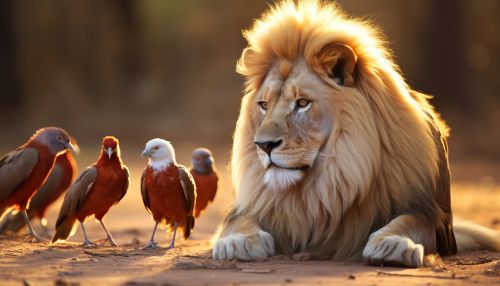Discussion: Animal Behavior
Introduction
Animal behavior, also known as ethology, is a branch of biology that studies the actions of animals in their natural environments. The study of animal behavior is a cornerstone of experimental psychology, shedding light on how animals interact with each other and their environments, and why they behave the way they do.
History
The history of animal behavior study dates back to the works of Charles Darwin and Jean-Baptiste Lamarck, who argued that behavior played a significant role in evolution. Darwin proposed that behavior could influence an organism's survival and reproduction, which would then influence the course of natural selection. Lamarck suggested that behavior could directly influence an organism's anatomy and physiology, a concept now known as Lamarckism.


Types of Animal Behavior
Animal behavior can be categorized into various types, including:
Instinctive Behavior
Instinctive behavior, or innate behavior, is the inherent inclination of a living organism towards a particular complex behavior. These behaviors are hard-wired and are performed without being based upon prior experience (that is, in the absence of learning), and are generally essential to the survival of the animal.
Learned Behavior
Learned behavior is a form of behavior that is not based on an innate ability, but is learned or acquired after birth through experience and repetition. Examples of learned behaviors include various forms of conditioning, such as classical conditioning and operant conditioning.


Social Behavior
Social behavior is behavior among two or more organisms within the same species, and encompasses any behavior in which one member affects the other. This is due to an interaction among those members. Social behavior can be seen in many different animals, including humans, mammals, birds, and insects.
Factors Influencing Animal Behavior
Several factors influence animal behavior, including the genetic makeup of the animal, the environment in which it lives, and its physiological state.
Genetic Factors
Genetic factors play a significant role in determining an animal's behavior. For instance, the mating call of a male frog is genetically determined and can be recognized by females of the same species.
Environmental Factors
Environmental factors, such as availability of food, presence of predators, and the current climate, can also influence an animal's behavior. For instance, squirrels will exhibit hoarding behavior when food is plentiful in preparation for times when food is scarce.


Physiological Factors
Physiological factors, such as hunger, age, and health, can also affect an animal's behavior. For instance, a hungry lion will go hunting, while a well-fed lion may ignore potential prey.
Studying Animal Behavior
Studying animal behavior involves observing and recording the behaviors of animals in their natural environments. This can be done in a variety of ways, including direct observation, experiments, and use of technology to track animals and measure their behavior.
Direct Observation
Direct observation involves watching animals in their natural environments or in a controlled setting. This method is often used to study behaviors that are easily observable, such as feeding habits or mating rituals.
Experiments
Experiments can be conducted to study animal behavior. These experiments often involve manipulating the environment or conditions and observing the resulting changes in behavior.


Use of Technology
Technology, such as GPS tracking and motion-sensing cameras, can be used to study animal behavior. This allows researchers to gather data on behaviors that may be difficult to observe directly, such as migration patterns and nocturnal behaviors.
Applications of Animal Behavior Studies
The study of animal behavior has many applications, from conservation efforts to improving animal welfare, to understanding human behavior.
Conservation
Understanding animal behavior can aid in conservation efforts. For instance, knowing the migratory patterns of a species can help create effective conservation strategies.
Animal Welfare
Animal behavior studies can also help improve animal welfare. By understanding the needs and behaviors of animals, we can create environments that meet their needs and promote their well-being.


Understanding Human Behavior
Finally, studying animal behavior can also provide insights into human behavior. Many principles of behavior are consistent across different species, and studying animal behavior can provide a simpler model for understanding complex human behaviors.
Conclusion
Animal behavior is a fascinating field that offers insights into the complex interactions between animals and their environments. By studying animal behavior, we can gain a deeper understanding of our own behavior and the world around us.
